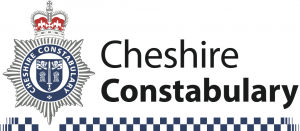Speed Cameras - Frequently Asked Questions
Why are there no 30MPH speed limit signs at the location?
On street lit roads the absence of speed signs indicates the road is restricted to 30mph. All other speed limits require repeater signs. You may wish to refer to the Highway Code for further information – this can be viewed by visiting www.direct.gov.uk and search for Highway Code.
Surely it’s unfair to enforce speed limits at night when the roads are quiet?
Research shows that the accident rate doubles at night, particularly late in the evening and in the early hours. The reasons for this are: higher speed due to less traffic; more alcohol and drugs consumption; tiredness; and reduced visibility. So respect for the limits is just as important at night, if not more so.
What decides where a camera goes?
All safety cameras introduced in Cheshire after October 2001 were promoted as a result of the location having a history of injury collisions, evidence of excessive speed, and there were no other reasonable engineering measures that could be used to improve safety. With the exception of a few historic sites, all camera enforcement sites comply with this criteria.
The Department for Transport (DfT) have removed the rules for establishing safety camera locations although the CSRG has adopted the guidance criteria for the justification of any new static camera sites. The selection criteria can be viewed at 6.1.1 of the DfT document
Where does the money generated from fines go to?
All fines generated by speeding drivers are paid to the courts system and government. We would rather drivers slow down reducing risks than be fined. We will however prosecute those drivers who cannot recognise speed limits and drive accordingly.
Why paint the cameras yellow?
We want drivers to know where the most dangerous areas of road are, so they can adjust their driving accordingly. Cameras are there to reduce crashes, so all the camera locations are published on this website.
There have hardly been any collisions at the camera near me. Why not take it out?
The camera may be the very reason why there are a reduced number of collisions. If we took out cameras like this, we would expect to see the number of crashes rise again.
What speed limit do you enforce at?
We are working towards the guidelines set by the Association of Chief Police Officers, which is not to prosecute motorists unless they are recorded as going at 10% plus 2mph over the posted speed limit. In the case of a 30mph limit that would be 35mph. There is some flexibility in application of the limits to safeguard against possible discrepancies between speedometers and police equipment.
What do you do about foreign nationals?
We make every effort to trace the driver.
What percentage of your sites actually work/how many cameras do you have in total?
We rotate live cameras between sites, so all sites are operational at some point. Dummy cameras are in use. The objective is to obtain compliance with speed limits and reduce casualties. Prosecutions are only a means to that end.
Government publicity says speed is a contributory factor in about a third of all crashes. Where does that figure come from?
There is clear evidence that better compliance with speed limits would help to cut both collisions and casualties on our roads. The Transport Research Laboratory has investigated numerous collisions and they found speed is a factor in nearly all collisions. We are not just looking at the collisions where the causation factor has been recorded as excess speed for the limit. Speed is also a factor when the cause of the collision is shown to be sudden braking, careless/reckless driving, following too close, loss of control of a vehicle, etc.
What is the Partnership’s policy on catching police officers speeding?
The same road traffic laws apply to police officers as to every other road user. If a police, or any other emergency services vehicle, activates a safety camera then the driver accounts for their actions and the case is investigated. If the driver is not found to be exempt (for example on an emergency call) then the prosecution process continues as normal.
Why isn’t any discretion given for a previous good driving record?
The law on speeding is clear and safety camera routes are clearly signed. A clean driving licence does not necessarily indicate a safe driver, as many drivers speed and endanger themselves and others. And If you hit someone at 39mph it doesn’t matter if you’ve just passed your test or been driving for 50 years, chances are they will die. If you hit someone at 30mph they will probably be seriously hurt, but they are less likely to be killed.
On many of the roads abroad there are interactive signs and reminders telling you about your speed. Why don’t you invest in something like that?
The local highways authorities already manage such signs.
Don’t cameras encourage motorists to suddenly brake hard?
Motorists should be driving within the speed limits so there is no need to brake hard at safety cameras if the law is being observed. Skilled drivers do not drive above the limit: they know the law and the consequences of collisions. About half the people hit by a vehicle travelling at 30mph will die; hit at 40mph, nine out of ten will die.
Can the cameras catch people speeding in both directions?
Fixed cameras can only detect in the direction it faces.
Do you have a problem with people vandalising cameras in Cheshire?
We have had instances where cameras have been vandalised. Damaged cameras are made a priority to reinstate to full working capacity, in order to maintain the safety of road users.
The actions of individuals taking part in such criminal activities means that they are putting their own lives and the lives of other road users at risk. We prosecute anyone who vandalises our cameras.
If people don’t pay the fine and choose to go to court what is the penalty likely to be?
You have the right to challenge the offence in court. The magistrates will then decide on any fine or penalty points to be awarded. The courts have the right to increase the fine or penalty points as they see fit in addition to imposing court costs.





